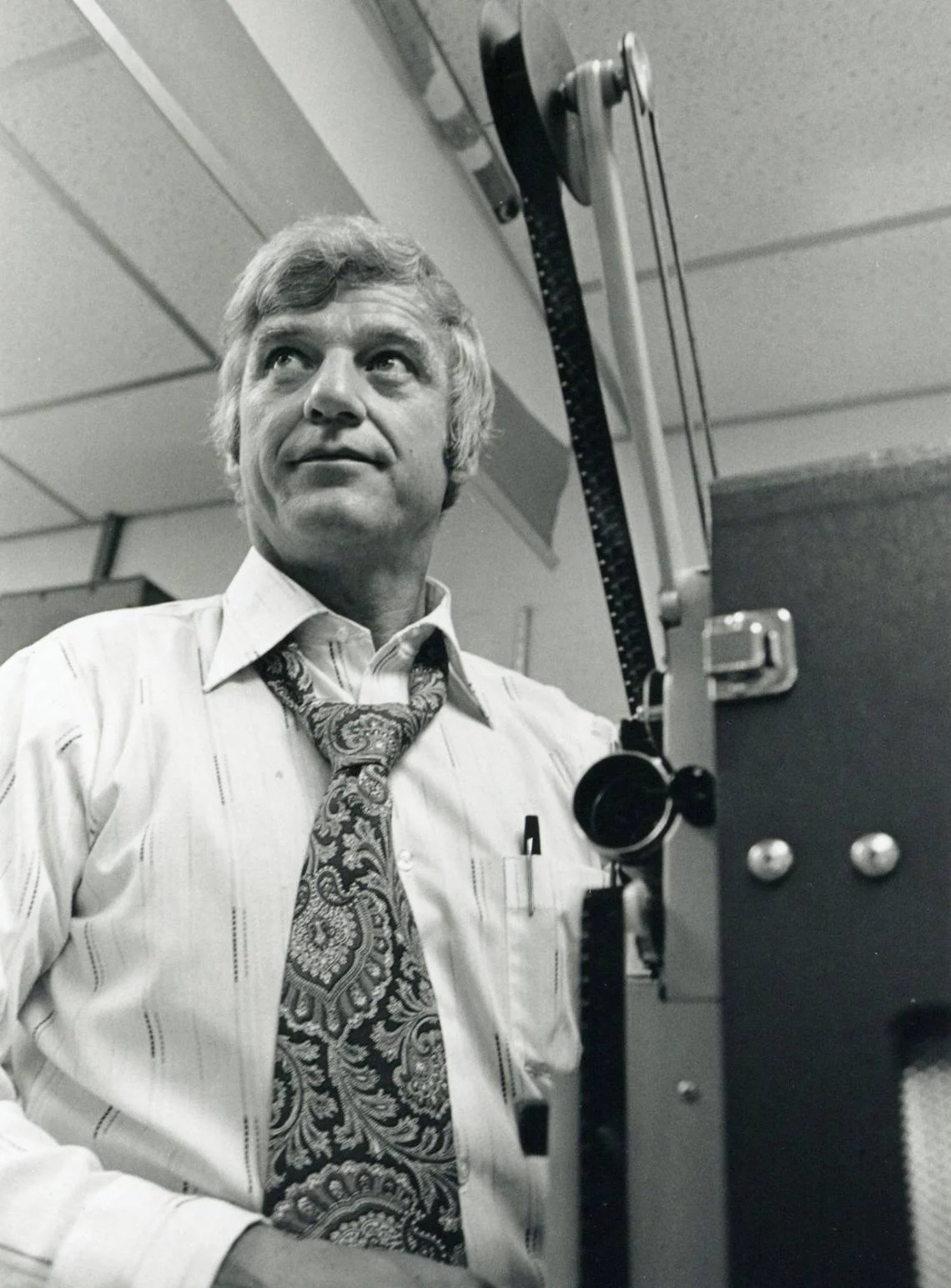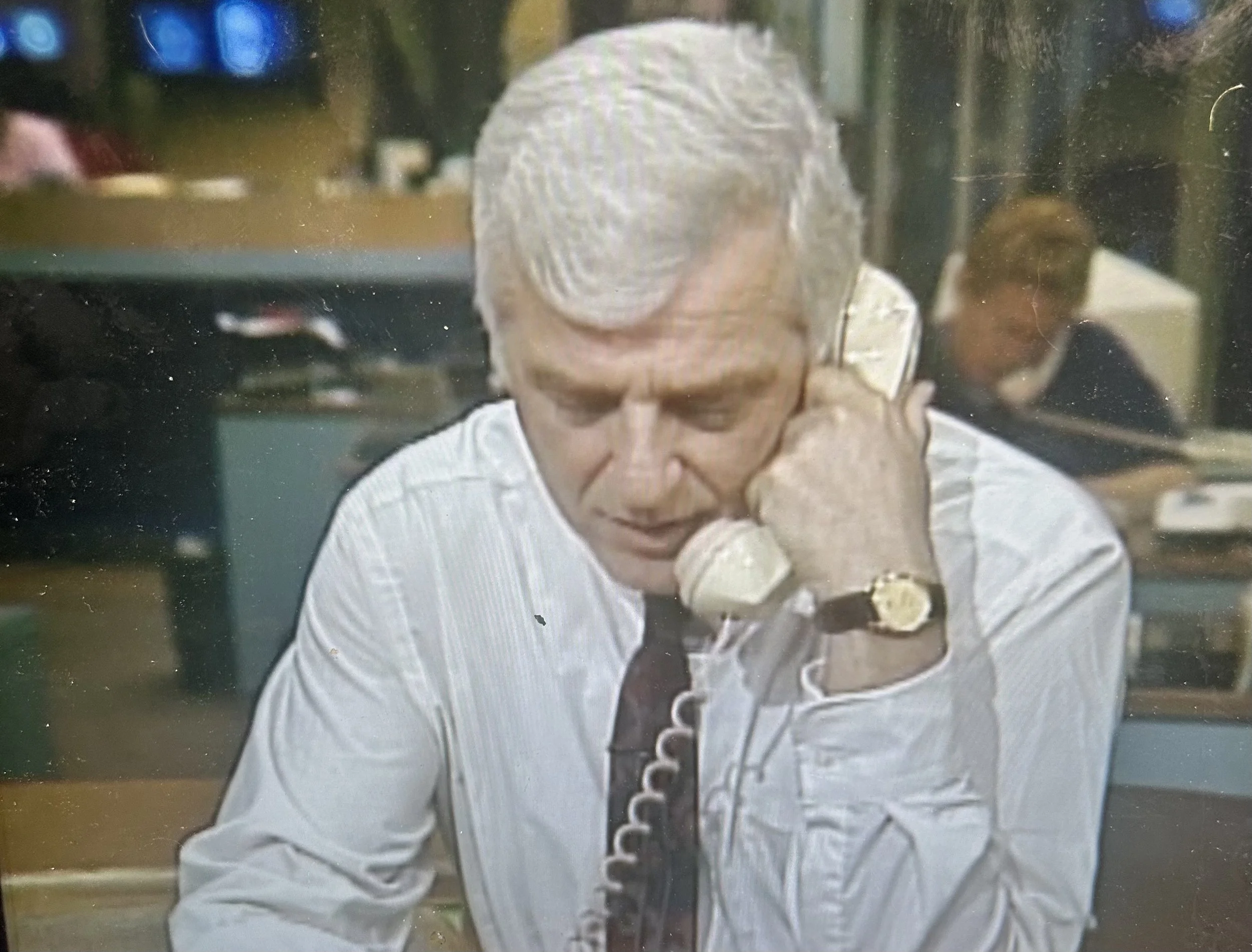Weighing Anchors
Charlie Gaddy in his early days at WRAL-TV, circa 1975.
For a period of my life from the late 1980’s to the early 1990’s, when I worked as a reporter at a local TV station in North Carolina, there was one question I could count on being asked every day.
It was the same question no matter who I was talking to: politicians, farmers, business owners, athletes; victims of crime or scam or storm; people who’s just lost a loved one or won the lottery; or just random people on the street.
Sometime during our conversation they couldn’t hold it in anymore. They had to ask: “Do you know Charlie Gaddy?”
When I told them I did, the guardrails came down. I was in. “Love that guy,” they’d say.
Charlie was the evening news “anchor” for WRAL-TV from 1974-1994, a period when that title described his role both at the station and in viewer’s lives. He died last month at 93, and a piece of our community was unofficially buried with him.
It’s hard to remember how important the TV “anchorman” used to be in our communities. The movie of the same name plays it totally for laughs, but the opening voiceover still gives a pretty accurate summary:
“There was a time…a time before cable…. when the local anchorman reigned supreme…. when people believed everything they heard on TV. (The anchorman) was like a man walking among mere mortals. He had a voice that could make a wolverine purr, and suits so fine that they could make Sinatra look like a hobo.”
Charlie Gaddy (left) with the “Action News 5” team, circa 1985.
In the movie, Ron Burgundy was all that – and a (hilarious) pompous ass. In real life, Charlie Gaddy was all that – and, for a time, “bestrode our (part of the) world like a colossus” – the most trusted voice in 23 counties. At his funeral service last month, one of his successors described him as “North Carolina’s Walter Cronkite.”
Like Cronkite, Charlie was the guy people wanted to hear from whenever something important was happening in our part of the world. What’s going on with that political scandal? Did they ever catch that killer? What’s the latest on the hurricane? When a couple of guys took hostages at a nearby newspaper to protest policy corruption, people tuned in to find out the latest. There was Charlie talking to the hostage takers – they put down their guns for a few minutes to take his call. People needed to see him when things seemed to be falling apart. And if he told us it was going to be okay, we believed him.
Charlie Gaddy in 1988 talking to hostage taker Eddie Hatcher during the kidnapping. I’m over his shoulder in the background trying to talk to the Governor’s Office. I got put on hold; Charlie got right through.
But people also wanted to hear from him when nothing in particular was going on. At the peak of his popularity, 54% of everyone watching anything on television at 6 pm in our area were watching Charlie. When Charlie did a special report, it didn’t matter what the topic was; people wouldn’t miss it. When Charlie came on to ask for pledges to raise money for the station’s annual cerebral palsy telethon, the same thing happened every time: one by one by one, every telephone would light up with people calling in to make a pledge – because Charlie said it was important.
I think so many people watched and pledged and gave us news tips because he’d spent his career learning how to talk – and listen – to them. He began his career in radio, hosting a program called “Ask Your Neighbor,” a sort of early exercise in crowdsourcing where he matched people who had problems with people who had solutions. Before long, a different version of that program moved to TV as “Good Morning Charlie.” And not long after that he became the evening news anchor, a gracious, gentle, trusted, abiding presence.
Reporters and photographers and producers may have been the arms and legs of the station, but Charlie was the heart and face; the rest of us basked in reflected glory.
We all know what’s happened to local news over the past 30 years. Local newspapers have shrunk or shuttered (half of US counties now have no local newspaper). Radio news operations have chosen political sides. TV options have atomized into a thousand channels and streams, and even as local “news” programs have expanded (in Charlie’s early days, the station produced a lean 12 hours a week of news, sports and weather; that’s now a swole 42 hours a week), the number of reporters has declined and the percentage of TV sets watching the news has cratered. The news “brand” we choose (if we choose one) may have 20 different brand ambassadors/faces/voices instead of two or three.
Pop Quiz: how many of you can name one of your current local news anchors?
And with that evolution over the past 30 years, we’ve lost some important things.
1. We’ve lost people we can trust: The people we trust never needed to be TV news anchors, but it was kind of reassuring when they were. Since my children were born in 2000, I’ve watched as the role models I tried to lift up to them – presidents, business leaders, religious icons, sports stars – consistently flamed out. We all need anchors in our lives, people we can trust enough to show up consistently and tell us the truth. Where do we find them?
2. We’ve lost agreement on a common set of facts. Back when we were all watching the news at the same time or reading the same newspaper every morning, we at least started with a common understanding of what the facts were. Once we had facts in hand, we were free to form our political opinions on what to do in response. Nowadays our feeds offer each of us different selections of “facts,” designed to reinforce our existing opinions. It’s hard to find common ground for a path forward if you can’t even agree on what the facts are. How do we find our way back to a shared set of facts?
3. We’ve lost our sense of place. People like Charlie gave us a feeling that we were all in this together, that what was going on in our region mattered, somehow, to all of us. Maybe only a few of us were hit by the tornado, but when Charlie went out to see the damage, we realized we should care -- he did. Maybe we didn’t have any close friends with cerebral palsy, but Charlie was there making support a priority – maybe we should too? With our retreat into enclaves watching polarized national news (or no news at all), we risk losing any sense of rootedness in our neighborhoods or connection to our neighbors. What’s the pathway to reconnect to our communities?
This is not a plea for the return of old school anchors or appointment TV with limited options. No one is going to give up personalized, politically-filtered news, on demand on any device anywhere. As Charlie told one of my colleagues a couple of weeks before he died: “We were blessed to work where we worked, when we worked, and with whom we worked.”
But it’s hard not to miss that era, and the anchors that kept us safely moored and closer together. What keeps us tethered now?
Notes:
Charlie Gaddy bio: https://history.capitolbroadcasting.com/people/icons/charlie-gaddy/
WRAL past ratings: https://capitolbroadcasting.com/2016/12/08/ratings-dominator-from-the-start/
WRAL more recent ratings: https://capitolbroadcasting.com/2018/11/29/wral-is-the-most-watched-local-news/
Takeover of Robesonian newspaper and kidnapping: https://en.wikipedia.org/wiki/The_Robesonian_takeover


